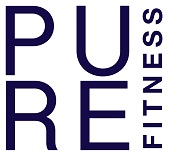You’ve probably heard all the benefits of weight training, from increased strength to improved metabolism. However, it’s important to also consider the drawbacks that can come with this popular form of exercise. While weight training can provide many positive results, such as muscle gain and enhanced physical performance, there are potential downsides that shouldn’t be overlooked. From the risk of injury to the time commitment required, it’s essential to be aware of the potential drawbacks before diving into a weight training routine.
Table of Contents
TogglePhysical Injuries
Muscle Strains
One of the potential drawbacks of weight training is the risk of muscle strains. When you engage in weightlifting or resistance training, you put stress on your muscles, sometimes causing them to overextend or tear. This can happen when you lift weights that are too heavy for your current level of strength or when you don’t use proper form during exercises. Muscle strains can be painful and can require time off from training to heal.
Tendonitis
Tendonitis is another physical injury that can occur as a result of weight training. Tendons are the tissues that connect your muscles to your bones, and they can become inflamed or irritated with repetitive and intense movements. Weightlifting exercises that involve a lot of repetitive movements, such as bicep curls or shoulder presses, can increase the risk of developing tendonitis. This condition can lead to pain, swelling, and limited range of motion, making it challenging to continue with your regular training routine.
Fractures
While weight training can help strengthen your bones, it can also put them at risk of fractures. If you push yourself too hard or use improper form, the excessive stress on your bones can lead to fractures. This is more common in individuals with osteoporosis or weak bones, but it can happen to anyone. Fractures can be not only physically painful but also require significant time to heal before you can resume weight training.
Sprains
Sprains can occur when you stretch or tear the ligaments that connect your bones together. Weight training exercises that involve quick and forceful movements, such as jumping or moving heavy weights too quickly, can increase the risk of spraining your joints. Sprains can be painful and can limit your range of motion, making it difficult to continue your weight training routine until they heal.
Ligament Tears
Another potential injury from weight training is ligament tears. Ligaments are strong bands of connective tissue that hold your bones together and provide stability to your joints. The repetitive stress that weight training can place on your joints may lead to the stretching or tearing of these ligaments. Ligament tears can be extremely painful and may require surgical intervention for proper healing.
Muscle Imbalances
Overdeveloped Muscles
One drawback of weight training is the potential for muscle imbalances. If you focus too much on certain muscle groups or engage in exercises that target specific muscles excessively, you may develop overdeveloped muscles. This can create an imbalance between different muscle groups, leading to poor posture, decreased range of motion, and an increased risk of injury. It is essential to maintain a well-rounded workout routine that targets all major muscle groups to avoid this issue.
Underdeveloped Muscles
On the flip side, weight training can also lead to underdeveloped muscles if you neglect certain muscle groups or exercises. It is common for individuals to focus primarily on the “show muscles” such as biceps and chest, while neglecting the “go muscles” like the posterior chain or core. This can lead to imbalances in strength and muscle development, affecting overall performance and increasing the risk of injuries. To have a balanced physique and reduce the chances of imbalances, it is crucial to incorporate a variety of exercises that target all major muscle groups.
Asymmetrical Physique
Weight training can potentially result in an asymmetrical physique. Focusing only on one side of your body or having improper form during exercises can contribute to muscle imbalances that create asymmetry. This can be particularly noticeable in movements such as squats or deadlifts, where one side of your body may be stronger or more dominant than the other. An asymmetrical physique can not only affect your appearance but also impact your performance and increase the risk of injuries. It is important to pay attention to symmetry during weight training and address any imbalances to maintain a well-proportioned physique.
Joint Stress and Pain
Joint Strain
One of the drawbacks of weight training is the potential for joint strain. The repetitive and high-impact nature of weightlifting exercises can place significant stress on your joints, leading to strain. This strain can result in pain, inflammation, and limited mobility. It is crucial to use proper form and avoid excessive weight or repetitions to reduce the risk of joint strain. Additionally, incorporating exercises that focus on joint stability and mobility can help minimize strain and maintain joint health.
Cartilage Wear and Tear
Weight training exercises that involve repetitive joint movements can contribute to wear and tear on the cartilage. Cartilage acts as a cushion between the bones in your joints, and over time, the continuous stress from weightlifting can cause damage to this protective tissue. This can lead to joint pain, stiffness, and increased risk of conditions like osteoarthritis. Proper form, appropriate rest periods, and incorporating exercises that reduce joint stress can help minimize cartilage wear and tear.
Osteoarthritis
Weight training, particularly when done with improper form or excessive loads, can increase the risk of developing osteoarthritis. Osteoarthritis is a degenerative joint disease that causes the breakdown of cartilage and leads to joint pain, stiffness, and reduced mobility. The repetitive stress placed on the joints during weightlifting can accelerate the progression of osteoarthritis, especially in individuals who are already predisposed to the condition. It is crucial to strike a balance between challenging your muscles and protecting your joints to minimize the risk of developing or worsening osteoarthritis.
Joint Inflammation
Weight training can also contribute to joint inflammation, which can lead to pain, swelling, and limited range of motion. The excessive stress placed on your joints during weightlifting can cause inflammation in the surrounding tissues and trigger an immune response. This can result in joint inflammation, making it challenging to continue with your weight training routine comfortably. Proper warm-up, cool-down, and incorporating exercises that promote joint health and mobility can help reduce the risk of joint inflammation.
Overtraining
Decreased Performance
One of the potential disadvantages of weight training is the risk of overtraining, which can lead to decreased performance. Pushing yourself too hard without allowing adequate recovery time can result in diminishing returns and a decline in your overall athletic performance. Overtraining can also lead to physical and mental exhaustion, making it harder to perform at your best during workouts.
Persistent Fatigue
Weight training requires a significant amount of energy and places tremendous stress on your body. If you do not give yourself enough time to recover between training sessions or if you continuously push yourself beyond your limits, you may experience persistent fatigue. This persistent fatigue can make it challenging to find the energy and motivation to continue with your weight training routine, hindering your progress and potentially leading to burnout.
Decreased Immune Function
Intense weight training without proper rest and recovery can suppress your immune system, making you more susceptible to illnesses and infections. Overtraining can lead to chronically elevated levels of stress hormones, which can weaken your immune system’s ability to fight off pathogens. This decreased immune function can result in frequent illnesses and prolonged recovery times, preventing you from consistently engaging in weight training.
Mental and Emotional Exhaustion
Overtraining can also take a toll on your mental and emotional well-being. Constantly pushing yourself beyond your limits can lead to feelings of frustration, burnout, and even depression. The pressure to maintain a rigorous training schedule, combined with the physical demands of weightlifting, can leave you mentally and emotionally drained. It is essential to listen to your body and allow yourself adequate rest and recovery to prevent mental and emotional exhaustion.
Risk of Cardiovascular Problems
Increased Blood Pressure
Engaging in weightlifting exercises that involve heavy loads or high-intensity movements can temporarily increase your blood pressure. This increase in blood pressure is a normal physiological response to the demands placed on your body during weight training. However, individuals with pre-existing hypertension or cardiovascular conditions should be cautious, as the temporary elevation in blood pressure during weightlifting can pose risks to their health. It is important to consult with a healthcare professional before starting a weight training program if you have any underlying cardiovascular concerns.
Heart Arrhythmias
Intense weight training sessions, particularly those involving maximal lifts or high-intensity interval training, can trigger heart arrhythmias in susceptible individuals. The sudden increase in heart rate and the release of stress hormones during weightlifting can disrupt your heart’s natural rhythm, leading to irregular heartbeats. While heart arrhythmias during weight training are relatively rare, those with existing heart conditions or a history of arrhythmias should exercise caution and consult with a medical professional before starting an intense weight training program.
Coronary Artery Disease
Weight training can be beneficial for cardiovascular health, but it also carries a risk of coronary artery disease in certain individuals. Heavy weightlifting can temporarily increase your blood pressure and increase the demand on your heart. If you have underlying issues with your heart or arteries, such as atherosclerosis or narrowed arteries, the increased demand can put strain on your cardiovascular system, potentially leading to complications. It is essential to undergo a thorough cardiovascular assessment before engaging in intense weight training, especially if you have any known risk factors for coronary artery disease.
Difficulty in Achieving Weight Loss
Increased Appetite
Weight training can make it more challenging to achieve weight loss goals due to its potential to increase your appetite. Intense weightlifting can stimulate your appetite and increase your food cravings, leading to a higher caloric intake. If you are not mindful of your nutritional choices and do not adjust your diet accordingly, weight training alone may not result in significant weight loss. It is crucial to pay attention to your caloric intake and maintain a balanced diet to support your weight loss goals while engaging in weight training.
Less Effective Calorie Burn
Contrary to popular belief, weight training alone may not burn as many calories as cardiovascular exercises like running or cycling. While weight training can increase your metabolic rate in the short term and help build lean muscle mass, it may not be as effective in burning calories during the actual workout session. However, weight training can increase your overall resting metabolic rate, meaning you will burn more calories at rest. It is important to combine weight training with cardiovascular exercises and maintain a calorie deficit to achieve optimal weight loss results.
Gain in Muscle Mass Offset Fat Loss
Weight training can lead to an increase in muscle mass, which is beneficial for overall health and aesthetics. However, muscle is denser than fat, so as you build muscle through weight training, you may not see a significant decrease in your overall weight. This can be discouraging for individuals solely focused on weight loss. It is crucial to remember that muscle gain can improve body composition, increase metabolism, and have a positive impact on long-term weight management. Focusing solely on the number on the scale can undermine the numerous benefits that weight training offers.
Plateau in Muscle Growth
Diminished Progress
After a certain period of consistent weight training, you may reach a plateau in muscle growth. Your body becomes accustomed to the stress placed on it during weightlifting, making it more challenging to continue building muscle at the same rate. This can be frustrating for individuals who are striving for continual progress and improvement. To overcome this plateau, it is crucial to incorporate progressive overload techniques, such as increasing weights, varying rep ranges, or altering exercise selection. Additionally, providing your body with ample rest and recovery time can also help break through plateaus and stimulate further muscle growth.
Genetic Limitations
Every individual has a unique genetic makeup that determines their muscle-building potential. Some individuals may naturally have a predisposition for greater muscle growth, while others may struggle to build muscle despite consistent weight training efforts. Genetic limitations can be discouraging, particularly if the desired muscle growth is not achieved. However, it is important to focus on progress and improvement rather than solely comparing yourself to others. With proper training techniques and a balanced approach, you can still make significant gains within your genetic limitations.
Lack of Variety in Training
Repeating the same weightlifting exercises and routines over time can contribute to a plateau in muscle growth. Your body adapts to the stress placed on it, meaning that it becomes more efficient at performing familiar movements. To continue seeing progress, it is crucial to introduce variety into your training routine. This can include incorporating new exercises, changing the order of exercises, or altering your training split. Adding variety not only enhances muscle stimulation but also keeps your workouts engaging and enjoyable.
Time Commitment
Longer Workout Sessions
Weight training requires a significant time commitment, as sessions typically involve multiple exercises, sets, and rest periods. If you are working with heavy weights or targeting multiple muscle groups, your workouts can become quite lengthy. This can be a disadvantage for individuals with busy schedules or limited time for exercise. It is important to plan your weight training sessions accordingly and consider incorporating high-intensity interval training or other time-efficient workouts for days when you are short on time.
Consistent Training Schedule
To see results from weight training, consistency is key. It is essential to maintain a consistent training schedule, which may involve training multiple times per week or even daily, depending on your goals. This level of commitment can be challenging for individuals with irregular schedules or other time constraints. However, making weight training a priority by scheduling it into your routine and staying accountable can help you overcome this drawback and reap the benefits of consistent training.
Transitions between Exercises and Sets
Weight training often involves transitioning between different exercises and sets, which can take up additional time during your workout sessions. This transitioning time can be inconvenient, particularly if you are working out in a crowded gym or have limited access to equipment. It is essential to plan your workouts in advance, have a clear understanding of the exercises you will be performing, and make the most efficient use of your time to minimize any potential drawbacks associated with transitions between exercises and sets.
Dependency on Equipment
Access to Proper Equipment
Weight training requires access to appropriate equipment to be effective and safe. This can be a disadvantage for individuals who do not have easy access to a well-equipped gym or home gym setup. The lack of proper equipment can limit the variety of exercises you can perform and potentially hinder your progress. However, there are alternatives available, such as resistance bands or bodyweight exercises, that can still provide an effective workout even without access to traditional weightlifting equipment.
Cost of Equipment
Investing in weightlifting equipment can be costly. Purchasing dumbbells, barbells, weight plates, and other weightlifting accessories can quickly add up, especially if you are looking to set up a home gym. The initial investment, as well as ongoing maintenance costs, can be a considerable drawback for individuals on a tight budget or not willing to make a significant financial commitment. Exploring alternative options, such as gym memberships or borrowing equipment from others, can help mitigate some of the costs associated with weight training.
Lack of Availability in Some Places
Depending on your location, access to weightlifting facilities may be limited. Not all neighborhoods or regions have well-equipped gyms or fitness centers nearby. This lack of availability can be a disadvantage, particularly if you want to engage in weight training but don’t have easy access to appropriate facilities. However, there are alternative solutions, such as home workouts, outdoor training, or finding creative ways to incorporate resistance training into your routine, which can help overcome this limitation.
Psychological Effects
Negative Body Image
Engaging in weight training can have psychological effects, particularly regarding body image. While weight training can improve muscle tone and overall physique, it can also lead to body image concerns if taken to an extreme. Persistent focus on physical appearance and comparison to others can create unrealistic expectations and self-dissatisfaction. It is important to cultivate a healthy mindset and focus on strength, health, and overall well-being rather than solely aesthetic goals when engaging in weight training.
Obsession with Appearance
Weight training can sometimes lead to an obsession with appearance. The pursuit of a certain physique or obsession with achieving a specific body fat percentage can overshadow other aspects of your life, such as relationships, social activities, or hobbies. This obsession can take a toll on your mental and emotional well-being, potentially leading to feelings of anxiety, stress, or self-esteem issues. It is important to maintain a balanced approach to weight training and prioritize overall health and happiness rather than solely focusing on appearance.
Pressure to Maintain Muscle Definition
Once you have achieved a certain level of muscle definition through weight training, there can be pressure to maintain that level consistently. This pressure can create stress and anxiety, as any perceived loss of muscle definition may be seen as a failure or setback. It is important to remember that our bodies naturally fluctuate, and focusing solely on maintaining a specific level of muscle definition can become mentally taxing. Learning to embrace and appreciate your body at different stages and accepting natural fluctuations is vital for a healthy mindset.








